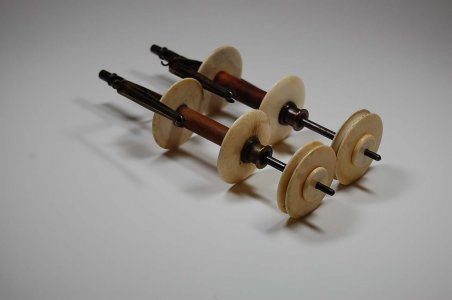- Joined
- Dec 15, 2014
- Messages
- 285
The temp that I used was well below boiling. It was probably 180 deg. F or so. It was producing a lot of steam that probably was not very healthy for these old lungs.
Thank you. Definitely a job for outside.
Darrell
The temp that I used was well below boiling. It was probably 180 deg. F or so. It was producing a lot of steam that probably was not very healthy for these old lungs.


...I used used motor oil once. It may have been TOO used,but I got a real thick coating of black on the part I was making. It was too thick. The coating was hard as blazes to get off,too.
the one in the back is the new one??You can buy gun blackening as well as gun bluing in small bottles. Brass black is also available. No need to get real complicated.
I make missing parts for antique mechanical devices. They might be made of iron,steel,ivory and brass. Over the years I have gotten very expert at making realistic finishes on my parts. The customer has to ask which part is the old one? Ivory is the hardest thing to age.View attachment 98223
I used used motor oil once. It may have been TOO used,but I got a real thick coating of black on the part I was making. It was too thick. The coating was hard as blazes to get off,too.
